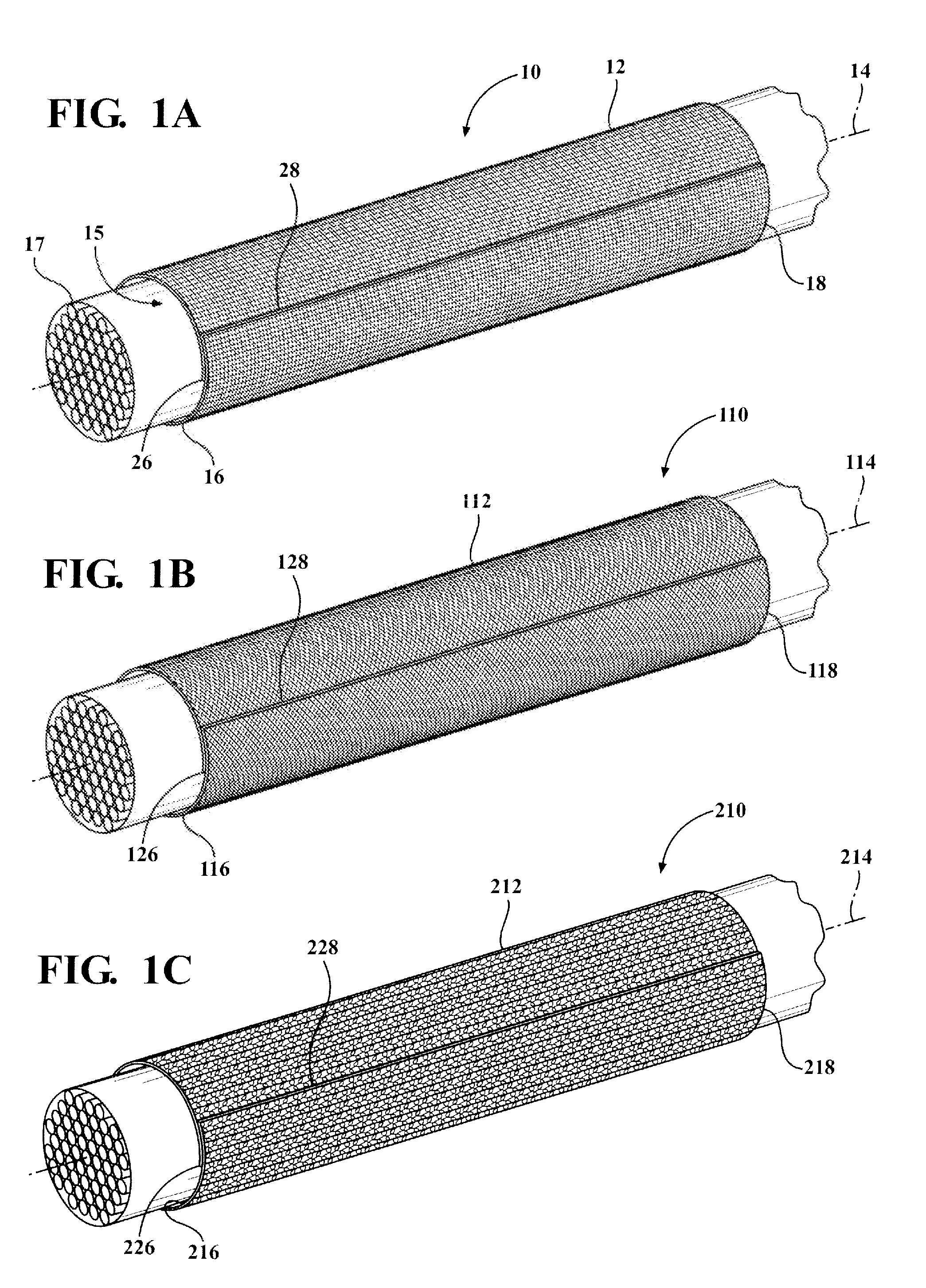Protective Sleeve With Bonded Wire Filaments and Methods of Construction Thereof
a protective sleeve and bonded wire technology, applied in the direction of insulation conductors/cables, cables, knitting, etc., can solve the problems of electrostatic discharge, esd, radio frequency interference, emi, etc., to achieve the effect of other than as desired, affecting the performance of control modules or other components in the vehicle, and affecting the proper functioning of electronic components
- Summary
- Abstract
- Description
- Claims
- Application Information
AI Technical Summary
Benefits of technology
Problems solved by technology
Method used
Image
Examples
Embodiment Construction
[0038]Referring in more detail to the drawings, FIG. 1A shows a self-wrapping sleeve 10 constructed according in accordance with one presently preferred embodiment of the invention. The sleeve 10 has a wall 12 extending along a longitudinal axis 14 between opposite open ends 16, 18, and forms a cavity 15 for protective receipt of an elongate member or members 17 to be protected, such as wire or a wire harness, by way of example and without limitation. The wall 12 is formed from a plurality of filaments interlaced with one another, wherein the term filaments is intended to include monofilaments and / or multifilaments, with specific reference being given to the type of filament, as necessary, hereafter. At least one of the filaments is provided as a continuous strand of conductive wire 20 (FIGS. 3A-3C) and at least some of the filaments are provided as heat-fusible nonconductive filaments 22 (FIGS. 3D-3F), whether being heat-fusible monofilaments or heat-fusible multifilaments. The hea...
PUM
| Property | Measurement | Unit |
|---|---|---|
| temperature | aaaaa | aaaaa |
| diameter | aaaaa | aaaaa |
| conductive | aaaaa | aaaaa |
Abstract
Description
Claims
Application Information
 Login to View More
Login to View More - R&D
- Intellectual Property
- Life Sciences
- Materials
- Tech Scout
- Unparalleled Data Quality
- Higher Quality Content
- 60% Fewer Hallucinations
Browse by: Latest US Patents, China's latest patents, Technical Efficacy Thesaurus, Application Domain, Technology Topic, Popular Technical Reports.
© 2025 PatSnap. All rights reserved.Legal|Privacy policy|Modern Slavery Act Transparency Statement|Sitemap|About US| Contact US: help@patsnap.com



